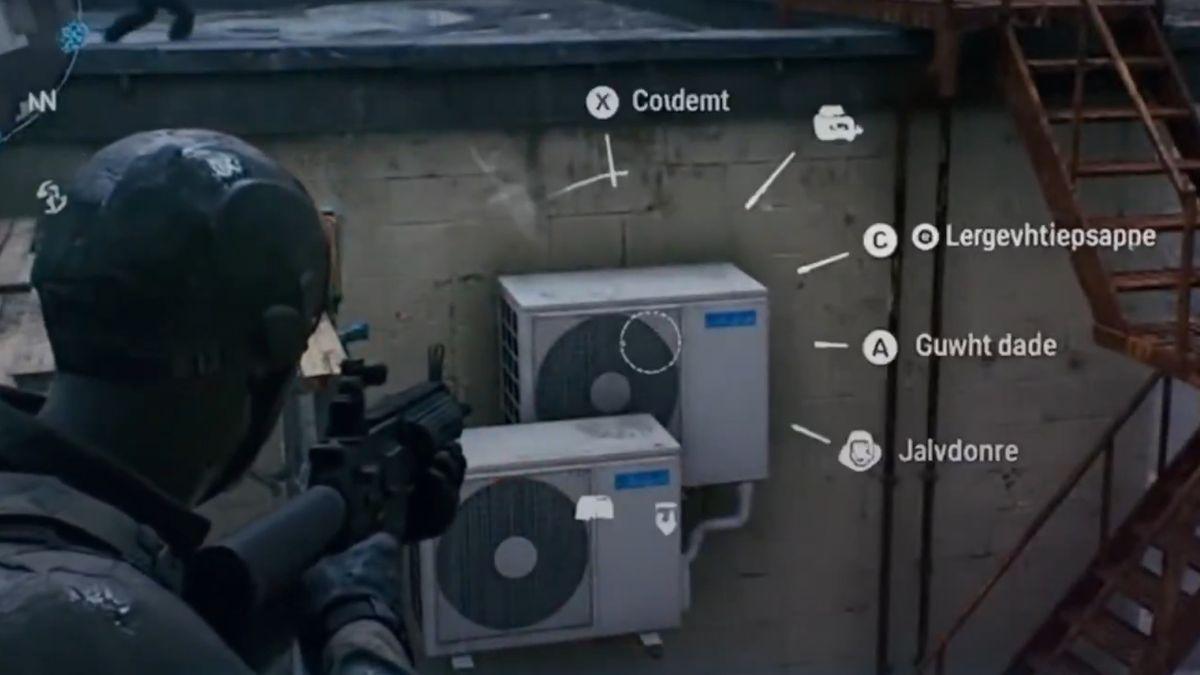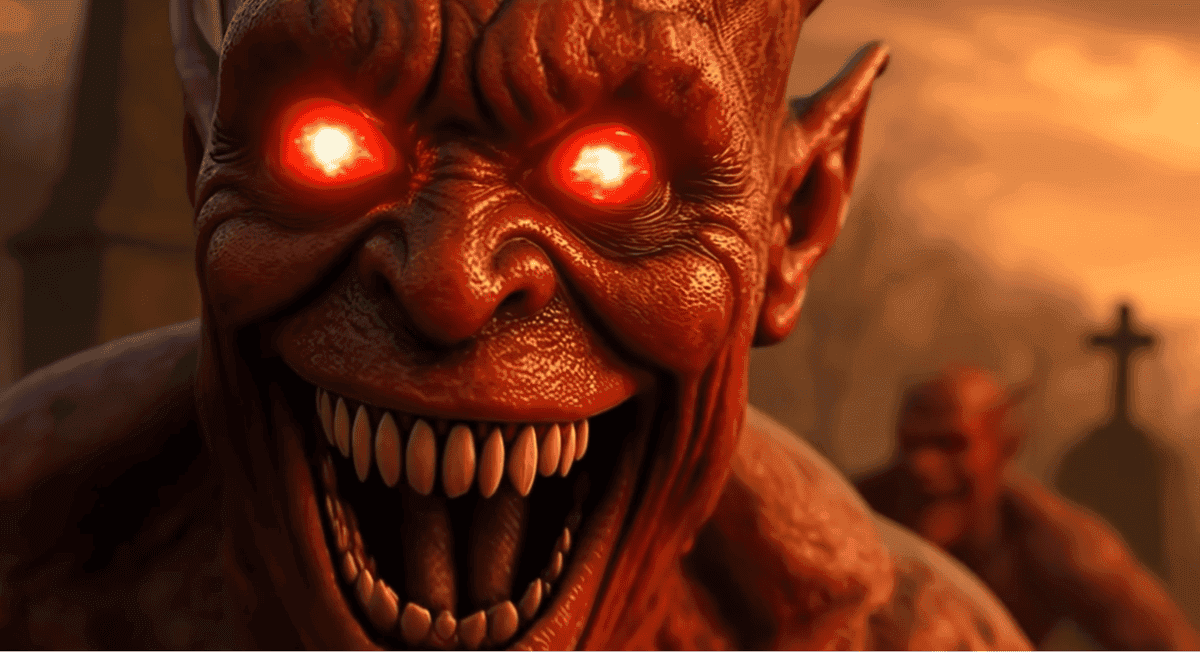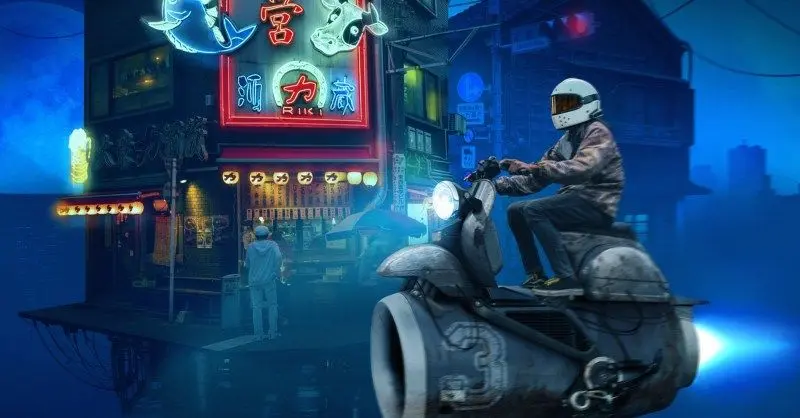AI-Generated Video Game Demo Sparks Controversy and Criticism
3 Sources
3 Sources
[1]
We're Laugh-Crying at This Footage of an AI-Generated Video Game
Last week, AI investor Matt Shumer posted AI-generated first-person-shooter footage that was intended to be an impressive glimpse at the future of video games. "AI games are going to be amazing," he tweeted in the caption of the 84-second clip. But instead of demonstrating that the video game industry is about to be revolutionized by the advent of generative AI, the clip drew widespread derision and mockery. And it doesn't take long to figure out why: to call the video AI slop carnage would be an understatement. The clip lacks virtually any degree of continuity or cohesion, with entire subway stations and cars popping into existence at random. "Bro, this looks like s***," one unimpressed user tweeted in response. "This is what video games look like to someone who doesn't play video games," another user offered. "Did you watch your own video?" another user implored. Ironically, the clip demonstrates that generative AI video generators are still far from rendering believable three-dimensional spaces, let alone a virtual environment that would hold players' attention. While the gaming industry has indicated a high degree of interest in leveraging generative AI, the videos being output by AI video generators have little to do with the highly complex and controllable environments rendered by modern game engines. Sure, if you heavily squint your eyes, Shumer's video makes it look like the AI came up with believable footage of a triple-A video game title -- but any degree of scrutiny quickly dispels that illusion. The model used in the video struggles greatly to render text, for instance, with the character following signs through a subway -- or "Sublone" -- station to a "Canual" or "Canuial" street in "Uptoown" of an unidentified metropolis. One freeze-frame reveals what appears to be a poor imitation of an in-game context menu, with labels offering the player to "Coidemt" or "Lergevhtiepsappe" a pair of inexplicably overlapping wall-mounted AC units. The AI doesn't even get the button prompts right, advertising a "C" that's not featured on any mainstream console, alongside some other nonsensical symbols. The playable character pops in and out of existence from various places off-camera, scrambling first- and third-person perspectives. An enemy approaching the player drops what appears to be a grenade, only to have it explode in his face. At one point, the player shoots his gun at a parked van, only for a fire escape to erupt in flames above it. Even the sparks flying off the player's machine gun appear to be shooting toward the gun, not away from it. One particularly -- and unintentionally -- hilarious moment shows the player straightening his legs in front of him to descend a ladder, only to plop into a partially water-filled sewer. indicating the AI hasn't formed a coherent representation of a virtual environment. Instead, it has seemingly mashed ingested footage in its training data together haphazardly by basing the next frame on the previous frame, and so on, which is essentially how modern AI video generators work. A followup clip, which features jumbled footage of a man running through a crumbling building, also struggles to create a coherent world, with a flashlight magically attaching itself to the man's chest and a tidal wave of water appearing at a moment's notice. This time, Shumer said the video was intentionally made to look like a "fever dream." Naturally, Shumer attempted to capitalize on all of the attention, promising that he would be "making this public soon." What exactly he's referring to beyond his "builds + demos" remains unclear at best. The investor also took his time addressing the negative feedback on X-formerly-Twitter. "Some clarifications based on the reaction to my last video," he offered. "This is NOT production-ready (obviously), nor do I intend to build it into something that is." "It's purely a glimpse into what the future of gaming might look like," Shumer added. "It is NOT great today, I know that. But in a few years, it will be!" "They're not finished products... they're glimpses of what's coming," he wrote, predicting that AI-powered games will be "incredible in five years." Shumer also claimed that he's already "built" an engine that resembles Unity and Unreal, both popular game engines that can render 3D worlds in real time. "Yeah, honestly, I can see where you're going with the idea and it's a great concept to explore -- you just haven't yet lergevhtiepsappe," another user joked.
[2]
Tech investor declares 'AI games are going to be amazing,' posts an AI-generated 'demo' of a god-awful shooter as proof
On an almost daily basis, a terminally tech-brained individual insists that AI will determine the future of human creativity if we simply believe hard enough. Today, that soothsayer is Matt Shumer, an investor who offered a demonstration of his vision for AI's videogame development potential -- and was quickly blasted for it, because the vision sucks to look at. Shumer -- CEO of HyperWrite, a company offering cutting edge AI tools like "Team Member Praise Generator" and "AI Sympathy Message Generator by HyperWrite for Heartfelt Cards" -- posted a video on X yesterday with the caption "AI games are going to be amazing." Judging from the boastful "(sound on)," he seemed convinced the video would illustrate the inevitability of our magnificent AI future. In actuality, what he uploaded was an embarrassingly incoherent AI-generated mockup of imitation shooter gameplay that feels like it could trigger new and exciting forms of psychosis if you watch it long enough. It's a moving kaleidoscope of AI sludge that's only amazing in how clearly it communicates that AI's biggest pushers are operating with a different set of standards. Let's walk through the video together. It begins with a soldier's first-person view as they seem to rappel from a helicopter onto a downtown Manhattan street, except they land with an inexplicable shower of glass shards as though they had just breached a window. Our soldier draws a sort of nightmare MP5 boasting two sets of iron sights, and empties its magazine into the open air. Our shots produce a cloud of sparks and debris inches from the gun's barrel, as though we'd been hip firing directly into a wall. We advance up the street with our squad. Tracer rounds whizz by, fired by nobody. We pass an establishment that, depending on the sign you look at, is either a "DELI," a "DELE," or a "DEE." Ahead, there's what appears to be a subway entrance, except it's labeled "Sublone" and the stairs go up. As we approach, three buttons appear from the bottom of the screen: Suddenly we're in a choose your own adventure game, and we can either "dive into the Uptown subway," "push up Broadway behind the bus," or "cut right, climb the fire escape." A cursor appears to select for us: We choose to dive. No diving happens. Instead, we ascend the stairs in traditional fashion, and as we reach the top step, an open-air subway platform manifests itself where Times Square had been. A bus that had been nearby is now a train, and the train is being fired upon by masked gunmen who our squadmates ignore. The train pulls away, mysteriously extruding a ladder onto the tracks behind it. Another choice appears, and we opt to "Board the Uptown train." Didn't the Uptown train just leave? Yes, but as we begin to sprint forward, another train squelches its way out of the wall in front of us. Our squadmate briefly fires at its rear door, perhaps in a fit of existential horror. We enter the train car. Through the windows, objects blur past at speed. Through an open door ahead, the train sits stationary at a platform different from where we were just standing. An LCD screen shows our next stop: Canuial St. Our squadmate grabs a handhold; his forearms are so vascular, they're haunting. There is an object on the floor -- something between an incendiary grenade and a fire extinguisher. A man enters the car through the open door ahead. He reaches for the object. It melts out of existence to recongeal in his hand, and he places it back on the floor. The AI generation seems to calculate that an explosion is necessary here, but has lost track of the logic -- so the man turns and launches a bolt of fire from his hand to burst against the train wall. Another choice. We decide to exit at the next stop from the front car, and reality breaks. We wave a hand before us, and as the door between cars opens, our car is no longer a car but a platform. Instead of proceeding through the train, we enter a different one through its side. There is a sedan in here, and a man. We brandish our MP5 -- its shape has changed -- and fire a shot. The shot damages us instead, and the subway train shatters like glass. There's an exit stairway ahead. Two drones emerge from its steps, joined by a red holographic energy. They hover as we make our next choice to ascend the steps and "climb the scaffolding." It's third person now. The subway exits onto a rooftop, where we do a little hop. There's an enemy across the roof from us. We fire a warning shot at him, but then turn to take aim at a pair of conjoined wall-mounted twin air conditioners. A radial menu appears, with options like "Condemt," "Lergevhtiepsappe," and "Guwht dade," which we ignore in favor of another choice for how to proceed. We choose to "take cover behind the HVAC," which we interpret as firing a shotgun blast at it. Our MP5 can do that now, I guess. Our actions seem to have earned the respect of our fellow rooftop combatant, who marks the occasion by ejecting two spare magazines from his armpit. More choices: Deciding to "drop down and escape" -- can there be any escape? -- we swing ourselves from the rooftop, marking the moment with another celebratory shotgun blast, and land beside a dumpster full of concrete shapes that hadn't existed just moments before. We approach an opened doorway. Our gun has taken a new aspect: a Frankenstein melding of AK, Famas, and M16. When prompted, we select "Cut the gate and push north." The camera swings to the left as we leave our body behind, assuming another being's first person view. There is a gate here, now, and we cut its lock. It's third person again, and there's a van in front of us, and the van is full of armed men, and while they seem content to ignore us, we choose "Suppress the van team" and begin shooting at its hood. This accomplishes nothing, but a fire escape above bursts unprompted into smoke and releases a lazy spray of debris. This, it seems, will not do. We shift once more into first person and decide to "Escape into the sewer," which we achieve not with the manhole directly in front of us, but via a ladder that springs into being beneath our friends' van. We descend the ladder in a way no human being has descended a ladder in their life, landing in a channel where -- to our right -- a cluster of people wait behind a barred gate, imprisoned in a grey void. As the video ends, a voice over our radio tells us that "they've got a chopper on us," which is just like in videogames. As one user replied, "Dude this fucking sucks." After the video provoked an outpouring of contempt -- which you can browse at your leisure -- Shumer followed up to say that "people miss the point" of demonstrations like his. "They're not finished products... they're glimpses of what's coming," Shumer said. "Is this an AAA game today? Of course not. Will AI-powered games be incredible in 5 years? Definitely." The thing about glimpses of the future is that they're, by definition, not definite. Where someone might see a stepping stone in technology's forward progress, someone else might see another demonstration that AI's advancements only promise the production of incrementally prettier nonsense.
[3]
Tech Bro Uses AI To Create The Worst FPS Ever
"AI games are going to be amazing (sound on)." That's the only context provided for the latest viral clip of a video game produced with generative AI tools. It's trash, a bizarre real-time hallucination of someone's idea of an on-rails Tom Clancy game that's revolting to witness but hard to turn away from. The clip was shared yesterday on X by Matt Shuman, the CEO of "rare Long Island AI startup" HyperWrite, as a tease for an upcoming project. "I'll be making this public soon! Completely open-source and community-driven," he added in a follow-up post. While the slop in question appears at first glance to be simulating a third-person shooter, a series of periodic prompt choices at the bottom of the screen suggests its more of a choose-your-own-adventure in which the AI cobbles together the next section based on what you've just selected. The result is a series of wonky, Matrix-like visual sleight-of-hands which make it feel like reality is falling apart and slipping past itself. A bus platform melts into a subway station. Cars are underground. HVAC systems are stacked on top of each other. Cascading tunnel systems look like a collage of discordant film reels being violently edited together. Multiple transportation signs read "Uptoon." Anytime the SWAT-looking avatar has to actually do something like shoot a gun, throw a grenade, or climb down a ladder, it looks like the type of glitch that circulates online when a big-budget blockbuster bombs. But my favorite part is near the end of the clip when the character is told to find cover from an enemy chopper, even though they're already inside a sewer beneath the street. The video ends on a shot of a random pile of left-over PVC pipe cuttings. The monstrosity looks less like the type of reveal trailer meant to get fans hyped about an upcoming game at an old E3 than one of those spam mobile gaming ads you get fed on social media where the 30-second arc is so full of internet brainrot you can't help but watch to the end. It satisfies your curiosity but not the need to impose some sort of meaning over its algorithmically generated cascade of unrelated signifiers. "There's a new king in town: Matt Shumer, co-founder and CEO of AI writing startup HyperWrite, today unveiled Reflection 70B, a new large language model (LLM) based on Meta's open source Llama 3.1-70B Instruct that leverages a new error self-correction technique and boasts superior performance on third-party benchmarks," reads a VentureBeat write-up from a year ago. Just days after that announcement, he was accused of fraud for peddling bogus benchmarks.
Share
Share
Copy Link
A tech investor's AI-generated video game demo, intended to showcase the future of gaming, instead draws widespread mockery and highlights the current limitations of AI in game development.
AI-Generated Game Demo Faces Backlash
Matt Shumer, CEO of AI startup HyperWrite, recently shared an AI-generated video game demo on social media, claiming that "AI games are going to be amazing"
1
. However, the 84-second clip, intended to showcase the potential of AI in video game development, instead drew widespread derision and mockery from viewers2
.Incoherent Gameplay and Visual Glitches
The demo, resembling a first-person shooter, was criticized for its lack of continuity and coherence. Viewers pointed out numerous visual glitches and logical inconsistencies, including:

Source: PC Gamer
- Subway stations and cars randomly appearing and disappearing
1
- Misspelled signs and nonsensical text (e.g., "Sublone" for subway, "Uptoown" for uptown)
1
- Inexplicable changes in perspective and environment
2
- Unrealistic physics and object interactions
2
AI Limitations Exposed
The demo inadvertently highlighted the current limitations of generative AI in creating believable three-dimensional spaces and coherent virtual environments
1
. Experts noted that the AI seemed to struggle with maintaining consistency between frames, resulting in a disjointed and confusing experience3
.Industry Implications and Reactions
While the gaming industry has shown interest in leveraging generative AI, this incident underscores the significant gap between AI-generated content and the complex, controllable environments rendered by modern game engines
1
. Critics argued that the demo resembled a "moving kaleidoscope of AI sludge" rather than a promising glimpse into the future of gaming2
.Related Stories
Shumer's Response and Future Claims
Following the backlash, Shumer clarified that the demo was not production-ready and was merely intended to showcase potential future developments
1
. He predicted that AI-powered games would be "incredible in five years" and claimed to have built an engine resembling Unity and Unreal1
. However, these claims were met with skepticism, given the poor quality of the presented demo3
.Broader Context and Implications
This incident is part of a larger trend of tech enthusiasts promoting AI as the future of human creativity, often with mixed results
2
. It raises questions about the current state of AI technology in creative industries and the gap between hype and reality in AI development3
.References
Summarized by
Navi
Related Stories
Developer releases Codex Mortis, claiming it's the first 100% AI-generated playable game
14 Dec 2025•Technology

Gaming Industry Grapples with AI Revolution as Developers Fear Job Displacement
03 Nov 2025•Technology

Generative AI in Gaming: Developers and Industry Veterans Weigh In on Its Potential and Challenges
16 Oct 2024•Technology

Recent Highlights
1
OpenAI releases GPT-5.2 AI model after code red memo targets Google's Gemini 3 threat
Technology

2
Disney invests $1 billion in OpenAI, licenses 200+ characters for Sora video generator
Technology

3
Disney accuses Google of massive copyright infringement through AI-generated character images
Policy and Regulation





